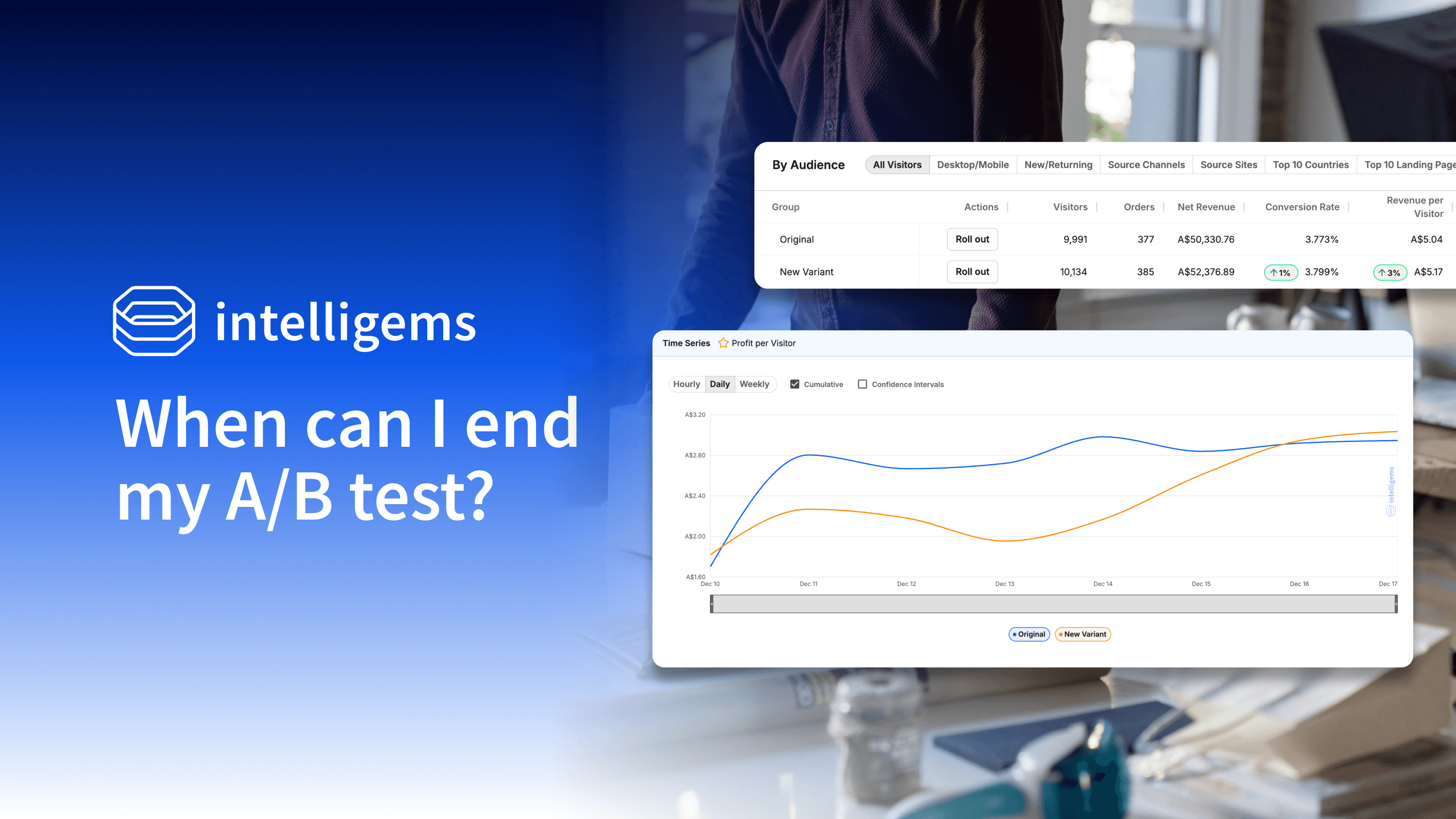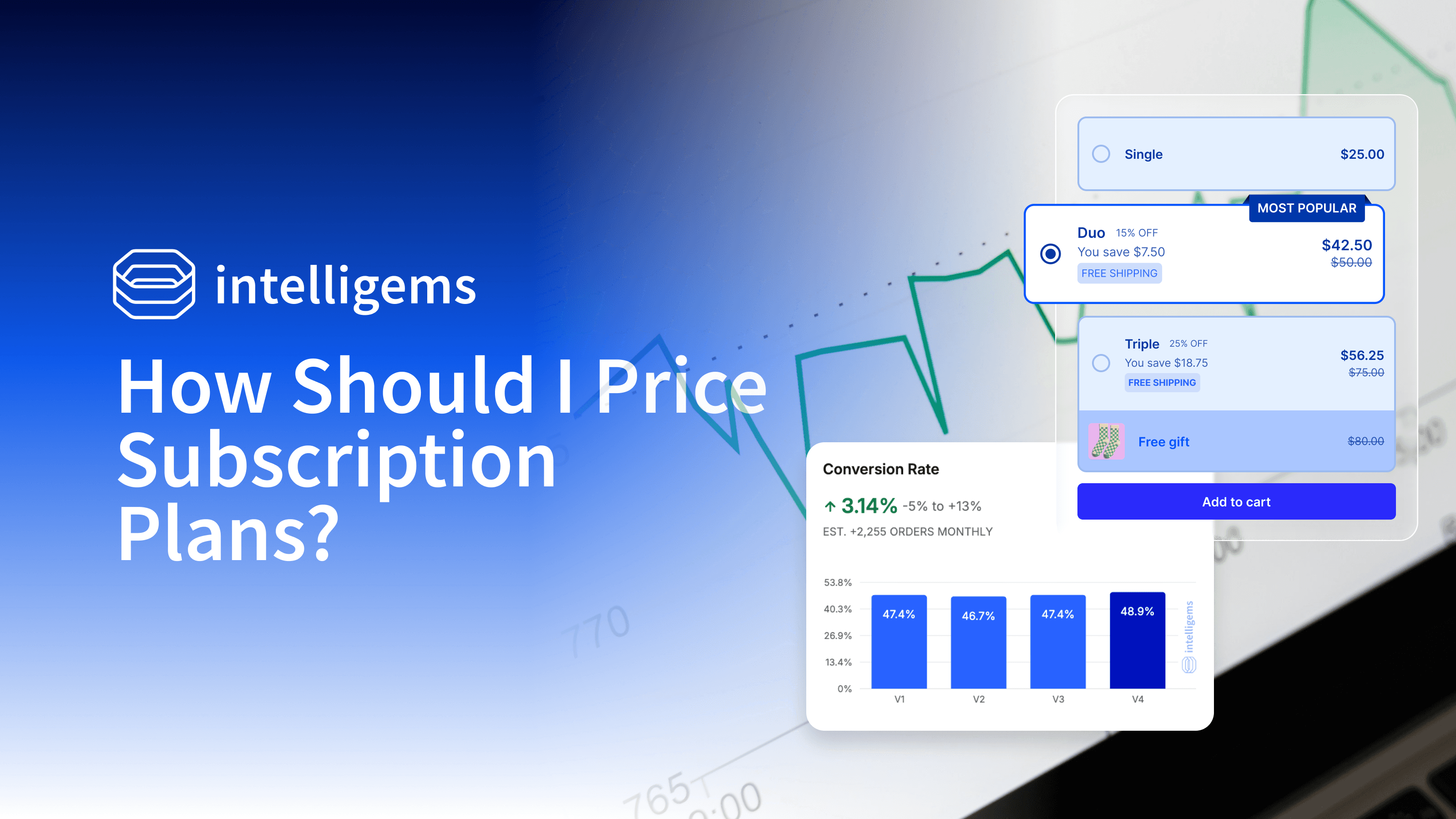Discounts
Nov 6, 2025
Should I Offer Tiered Discounts or Flat Discounts?
Flat discounts are simple. Tiered discounts reward cart building. Which structure drives more profit per visitor for YOUR business?
15% off everything. Or 10% off at $100, 15% off at $150, 20% off at $200. They might deliver similar average discounts. So why might one significantly outperform the other?
The answer depends on how your customers actually shop. Flat discounts are simple. Tiered discounts reward cart building. Which structure drives more profit per visitor for YOUR business? You won't know until you test.
Why Do Flat Discounts Feel Like the Default?
Flat discounts feel simple to manage. Tiered discounts seem complex. With Intelligems, tiered structures are just as easy to implement and might be more profitable. Test both to find out which works for your business.
Flat discounts feel safe. One number, one message. "15% off everything" requires no explanation. Your customers understand it immediately. You can set it up in minutes.
Tiered discounts, on the other hand, seem complex. Multiple thresholds. Different discount percentages. More rules to manage. With Intelligems, tiered structures are just as quick to set up and just as easy to manage as flat discounts.
That simplicity has real value. But it comes with a trade-off. A flat 15% discount treats all cart sizes equally. A customer buying $40 gets 15% off. A customer buying $200 gets 15% off. You might be over-discounting small purchases while under-incentivizing large ones. Or you might not. The only way to know is to compare flat against alternatives.
What Are Your Discount Structure Options?
Your discount structure affects who buys, how much they buy, and whether you're profitable on that order.
You're not just choosing a discount percentage. You're choosing how to distribute that discount across different order sizes.
Flat percentage (15% off everything). Simple. Treats all cart sizes equally. Might over-discount small purchases or under-incentivize large ones.
Tiered percentage (10% at $100, 15% at $150, 20% at $200). Rewards cart building. Protects margin on small orders. More complex. Might confuse customers if thresholds don't align with buying patterns.
Spend-based flat ($20 off $100 purchase). Clear value. Works when hero products cluster around the threshold. $20 off $100 is 20%, but only 10% at $200.
Volume discounts (Buy 2, save 10%). Product-specific cart building. Works well for consumables or bundles.
Hybrid (Flat 10% + extra 5% at $150). Everyone gets something, large carts get more. Drives cart building without abandoning small purchases.
Each approach could work. Or not. It depends on your customers, your average order value, and your margins. The question is which one increases profit per visitor for YOUR business. With Intelligems, you can test both without complex setup or manual discount code management.
See how tiered offers work in practice. This episode walks through building tiered volume discounts ($100 free shipping, $200 gift with purchase, $300 50% off) and discusses working with finance to hit margin targets.
Why Profit Per Visitor Matters More Than Average Discount
Tiered discounts might give the same average discount depth as flat discounts. But the distribution of that discount determines profitability.
Two different discount structures can deliver the same average discount percentage while producing wildly different profit per visitor.
The formula: Profit per visitor = (Revenue - Promotion cost) ÷ Total visitors
With flat 15%, every customer gets 15% off regardless of cart size. A $40 cart saves $6. A $200 cart saves $30.
With tiered (10% at $100, 15% at $150, 20% at $200), customers below $100 get 10%. Between $100-$150 get 15%. Above $150 get 20%. Your average discount depth might still be 15%, but it's distributed differently.
Which drives more profit per visitor? If tiered encourages customers to add items to hit higher thresholds, AOV might increase enough to offset deeper discounts on large carts. If customers below $100 abandon because they don't qualify, conversion drops and profit suffers.
Concrete scenario: Average order value is $85. With flat 15%, total discount cost per 100 visitors might be $1,275. With tiered (10% at $100, 15% at $150), if 30% of customers stretch from $85 to $105, your AOV increases but discount cost might drop to $1,150. Higher revenue, lower cost, better profit per visitor.
Or customers don't stretch. They see the tiers as complicated and abandon. Profit per visitor drops.

Test to find out which scenario applies to your business.
What's the Simplest Test I Can Run?
Start by testing your current flat discount against a tiered alternative. Let profit per visitor decide the winner.
You don't need to test five different structures at once. Start simple. If you're new to testing discount structures, start with the fundamentals of price testing to build your testing foundation.
Step 1: Analyze your order distribution. Pull order data from the past 90 days using Shopify's order reports. Where do orders naturally cluster? If you see clusters at $60, $110, and $180, those are your natural buying patterns.
Step 2: Design your tiered structure. Align tiers with order clusters, not round numbers. If orders cluster at $60, $110, and $180, test tiers at $75 (10% off), $125 (15% off), and $200 (20% off). Use the same logic as free shipping thresholds.

Example: Orders clustering between $50-$200 suggest testing thresholds at $50, $100, $150. A $200 threshold would be too aggressive given lower order volume above that point.
Step 3: Test flat vs tiered. Control group gets your current flat discount (say, 15% off everything). Variant group gets the tiered structure (10% / 15% / 20% at the thresholds you set). Run both simultaneously for 2-3 weeks.
Step 4: Measure profit per visitor. Track conversion rate, AOV, and profit per visitor. AOV might increase while profit drops if the tiered structure gives away too much on large carts. Conversion might drop if customers below the first threshold abandon. Profit per visitor tells you which structure actually makes you more money.
Before fine-tuning your discount strategy, understand which tests create the biggest impact. This episode explains the difference between big swings (like testing discount structures) and micro-optimizations.
Common Mistakes
Most discount strategies fail because brands optimize for simplicity instead of profitability, or never test at all.
Testing too many tiers at once. Start with 2-3 tiers, not 5+. More tiers create complexity for customers and make it harder to analyze results. Test simple first, add complexity only if needed. Similarly, if you're wondering whether to test discounts across your entire catalog at once, learn the right approach to testing at scale.
Not analyzing order clusters first. Setting tiers at $50 / $100 / $150 because they're round numbers ignores how your customers actually shop. If orders cluster at $67 and $145, your $100 tier sits in a dead zone. Align tiers with natural buying patterns.
Measuring AOV instead of profit per visitor. AOV might increase while profit drops. If tiered discounts push customers to higher tiers with deeper discounts, you might give away more margin than the AOV increase justifies. Only profit per visitor captures whether the change helps your bottom line.
Creating confusing tier structures. Customers shouldn't need a calculator to understand your discount. "10% at $100, 15% at $150, 20% at $200" is clear. "8.5% at $87, 13.2% at $143, 18.9% at $211" creates friction.
Ignoring the breakeven math. Small AOV increases might not offset deeper discounts. If 20% of customers stretch from $90 to $110 to hit a higher tier, but the higher tier gives 15% instead of 10%, calculate whether that trade pays off before assuming it's a win.

Choosing flat by default because tiered seems too complex. With tools like Intelligems, tiered structures take minutes to set up and test. Choose simple because you tested it and it's most effective, not because other options seem impossible.
Stop Guessing. Start Knowing.
Flat discounts feel safe. They're simple to understand and seem easier to manage. Tiered discounts seem complex: more rules, more setup, more to track.
But with the right tools, tiered structures are just as easy to implement. The real question isn't which is simpler to set up. It's which one drives more profit per visitor for your business. The only way to know is to test.
Here's what to do:
Test your current flat discount against a tiered alternative. Don't assume you know which works better.
Align tiers with order clusters in your data. Not arbitrary round numbers.
Track profit per visitor, not just AOV or conversion.
Start with 2-3 tiers, not complex structures.
Let your customers tell you which structure drives more profit. Their behavior reveals the answer.
Once you've optimized your discount structure, the next question is whether your base prices are right. Learn how to validate your pricing strategy.
Don't guess which discount structure works best. Know!
Ready to find out whether tiered discounts increase your profit per visitor? When you're ready to test what works for your business, let's get you testing beyond what's typical.
AB Testing
Ecommerce Strategy
AB Testing







